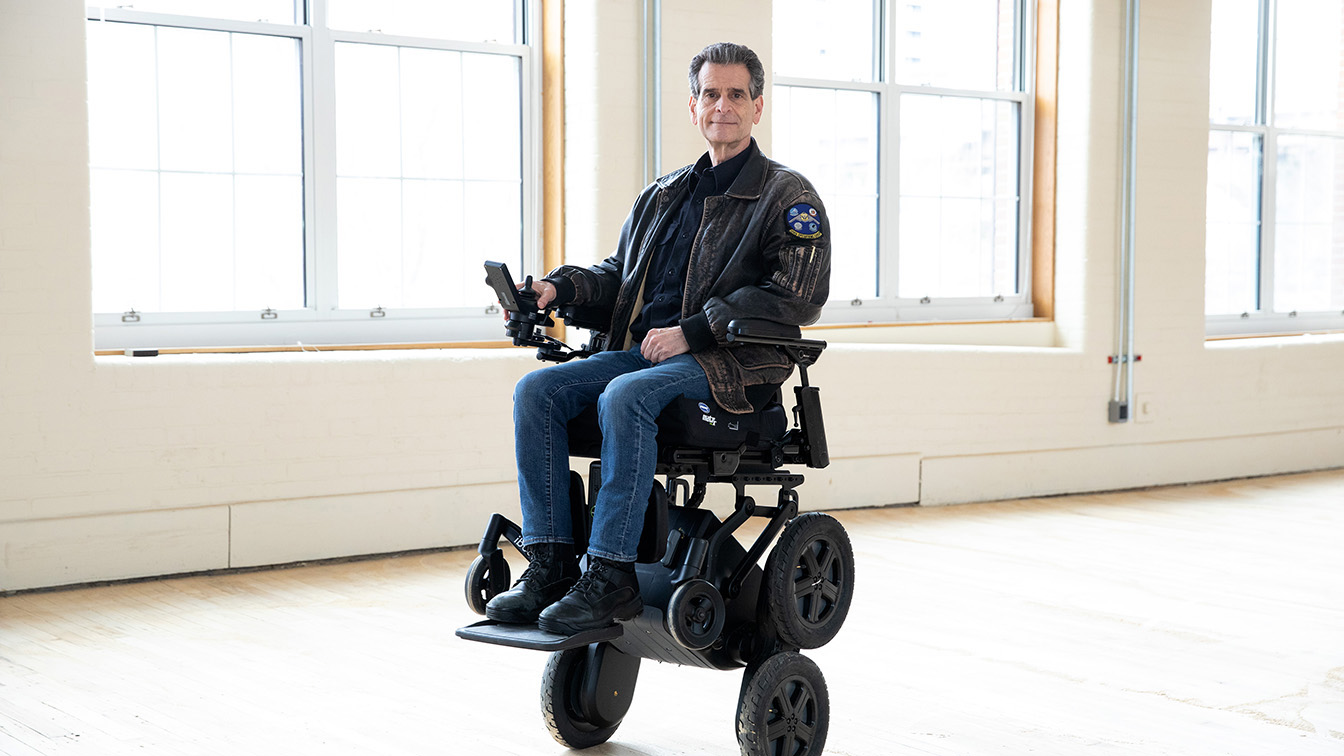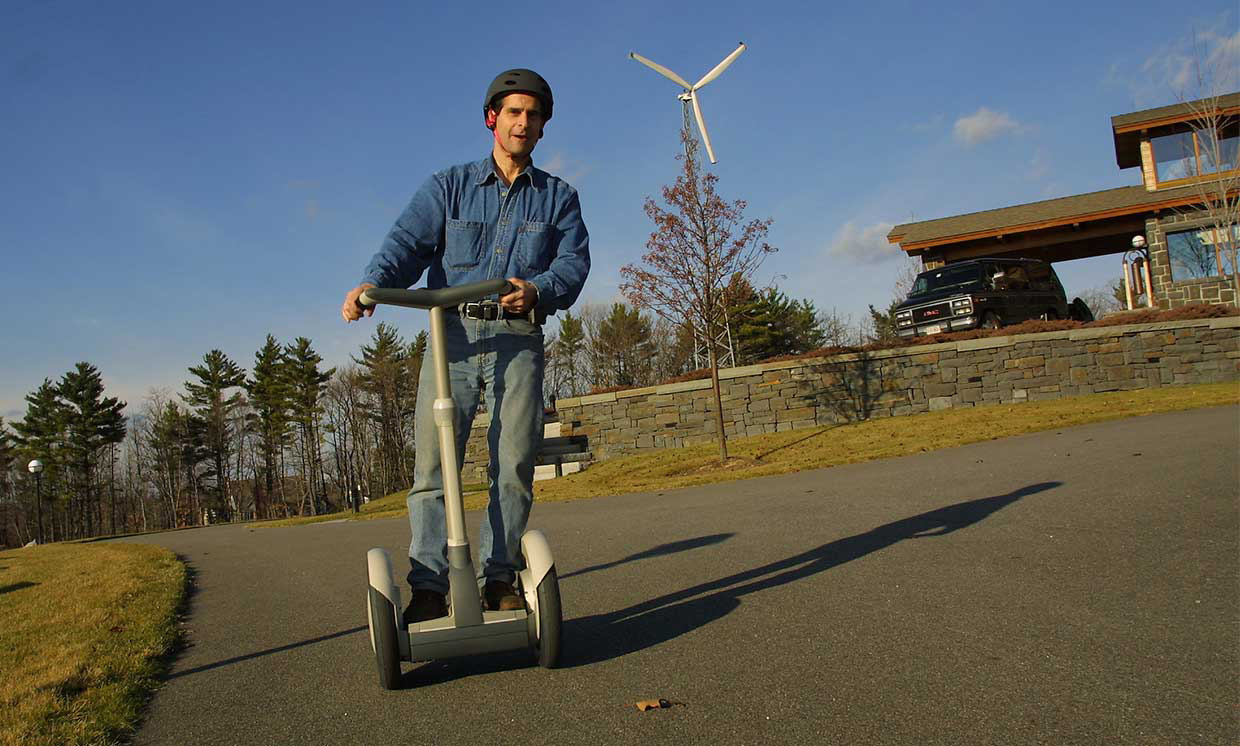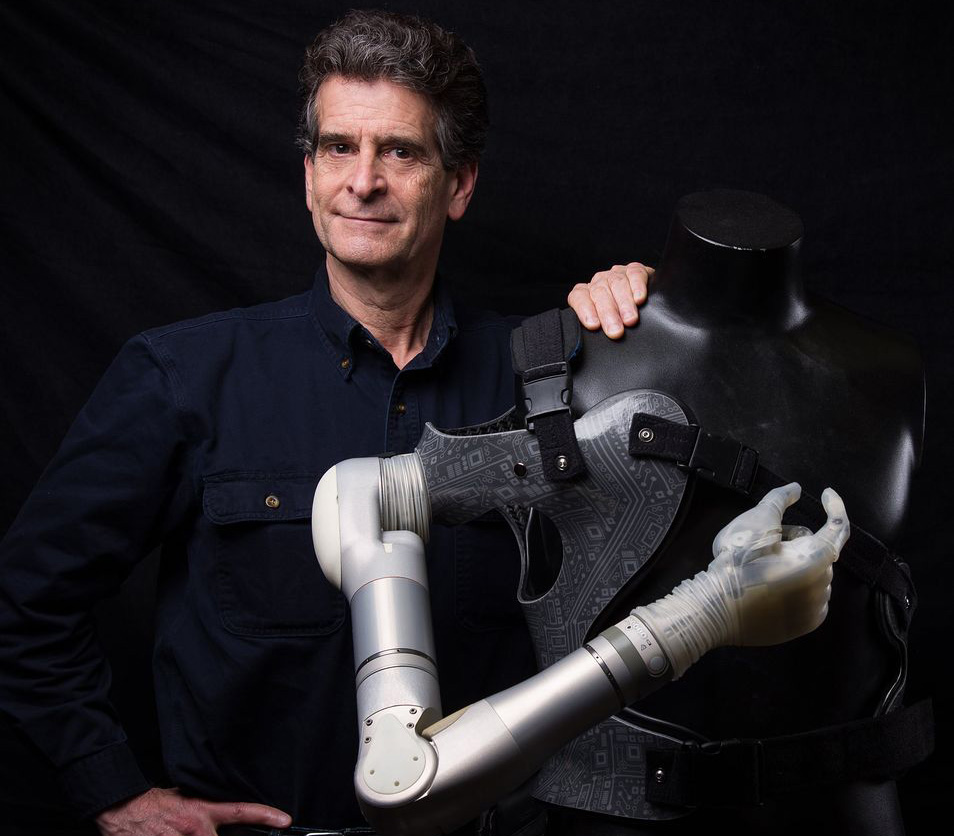Dean Kamen: The True Superhero of Mobility
Dean Kamen admits that his first invention wasn’t a big seller, although to give him his due he was only six years old when he invented it. Dean was required to make his bed every morning, but being a child he found it difficult to keep the sheets taut at both ends of the bed; as he later put it, he discovered “that you can pull a noodle, but you can’t push a noodle”. To solve this challenge, he rigged a system of pulleys that would enable him to tug both ends of his sheets at once, and in the process began a career of innovation that would see him become one of the most prolific inventors in history, bringing radical change to the quality of life of countless people around the world.

A practical education
Dean was born in New York in 1951; his father was a comic book illustrator working on popular titles of the time such as Mad magazine, while his mother was a teacher. Despite his mother’s influence, Dean struggled with school as a young child and it was later discovered that he was dyslexic. Although he could read pages of equations and formulas faster than anyone around him, he struggled with the written word; he claims that he has only ever read one novel as an adult. Fortunately Dean excelled at more practical pursuits, and from an early age he was devising profitable new inventions, specializing in light and sound systems for musicians and other stage performers. He was even asked to improve the automation of the famous Ball Drop at the Times Square New Year’s Eve celebrations. By the time Dean had left high school, he was earning $60,000 a year - more than the combined salary of his parents!
"The brand new social experience where you activate your gaming skills as you train like a spy."
- TimeOut
Take on thrilling, high-energy espionage challenges across different game zones.

Dean’s attention soon shifted from light shows to more important matters. His older brother, a doctor, had told him of the challenges faced by diabetics who required regular insulin injections. Dean devised a remarkable solution, the AutoSyringe; a wearable device that provided regulated infusions of insulin into the patient’s bloodstream. This gave patients greater freedom, dramatically improving their quality of life and reducing the need for painful injections and the complications that come with them. The AutoSyringe quickly became Dean’s sole focus, and he dropped out of college to concentrate all of his efforts on the development and marketing of the device. Within five years, the AutoSyringe was on the market and changing lives, and by the time Dean was 30 he had sold the rights to the product to a healthcare company, becoming a millionaire in the process. Many would have rested on their laurels after such a success but Dean was just getting started. The following year he founded DEKA, the company that would develop all of his future inventions.

The True Superhero of mobility
Over the years, DEKA has developed a staggering range of products; Kamen now holds over 1,000 patents, many of which are for devices similar to the AutoSyringe, simple and effective solutions to problems faced by medical patients that drastically improve their quality of life. One early example was the HomeChoice, a lightweight, affordable and easy-to-operate dialysis machine that enabled people suffering from kidney problems to manage their own dialysis needs without assistance. Although these products were tremendously successful and brought radical change to countless patients, Kamen’s attention was increasingly moving toward a new area of innovation: products that would enhance people’s mobility.
One of the first examples of this was the iBOT, an extraordinary wheelchair design that uses motorized wheels and gyroscopes to offer a far greater range of movement to users; it is able to climb stairs, and can raise the user’s body and head position to the same height as a standing human, allowing users to speak face to face with other people. Kamen then took the technology he had developed for the iBOT and converted it for use by able-bodied people, devising the infamous Segway PT. The Segway was in many ways a victim of its own hype, with prominent Silicon Valley figures proclaiming it to be the future of human transportation. Steve Jobs went as far as describing it to be “as big a deal as the PC”, but the reality proved more challenging. Various problems hampered mass market acceptance of the machine, not least its prohibitive cost and the less-than-enthusiastic welcome it received from legislators, many of whom refused to license the device for public use. To make matters worse, there were a number of high-profile accidents involving Segway users, most notably when President George W. Bush was photographed taking a tumble while riding one in 2003.

Using the force
These setbacks did nothing to slow down Kamen’s relentless innovative drive. His next major project came about when he discovered the head of Defense Advanced Research Projects Agency (DARPA) and a top US Army surgeon in his office, uninvited. They told Dean that they needed DEKA to develop a new prosthetic robotic arm for wounded soldiers, of whom more than 2,000 had returned from combat missing both arms. They then specified that this prosthesis should have the sensitivity to pick up a raisin without dropping it, and a grape without crushing it. Kamen’s response was to tell them, “You’ve been watching too much Terminator.” But within a couple of years he had delivered precisely what they demanded. The LUKE arm (named after Luke Skywalker) provides users with unprecedented levels of control and sensitivity, using electromyogram electrodes to pick up signals from the patient’s muscles and translate them into precise movements, and although it is not the only mind-controlled prosthesis on the market, it is unique in the degree of movement afforded to the user, being the only prosthesis of its kind that can enable someone to reach above the shoulder or behind the back. After 15 years in development and clinical trials, the LUKE arm is now commercially available and is revolutionizing the lives of amputees around the globe.

Kamen continues to invent remarkable products to this day; a recent innovation is the Slingshot, a water vapor distillation system that uses a Stirling engine for power. The Slingshot enables the purification of drinking water from almost any contaminated source, and its extremely low energy requirements mean it can be powered using a wide variety of fuels, including cow dung. Although the Slingshot is not in commercial development, Dean hopes to distribute these devices throughout areas where contaminated drinking water is a major vector of disease. It is perhaps fitting that an inventor who has produced a constant stream of innovation for his entire life should now be working on resolving the world’s clean water crisis, which would be an ideal crowning achievement for the career of a True Superhero.
SPYSCAPE+

Join now to get True Spies episodes early and ad-free every week, plus subscriber-only Debriefs and Q&As to bring you closer to your favorite spies and stories from the show. You’ll also get our exclusive series The Razumov Files and The Great James Bond Car Robbery!


Gadgets & Gifts
Explore a world of secrets together. Navigate through interactive exhibits and missions to discover your spy roles.
Your Spy Skills
We all have valuable spy skills - your mission is to discover yours. See if you have what it takes to be a secret agent, with our authentic spy skills evaluation* developed by a former Head of Training at British Intelligence. It's FREE so share & compare with friends now!
* Find more information about the scientific methods behind the evaluation here.


Stay Connected
Follow us for the latest
TIKTOK
INSTAGRAM
X
FACEBOOK
YOUTUBE